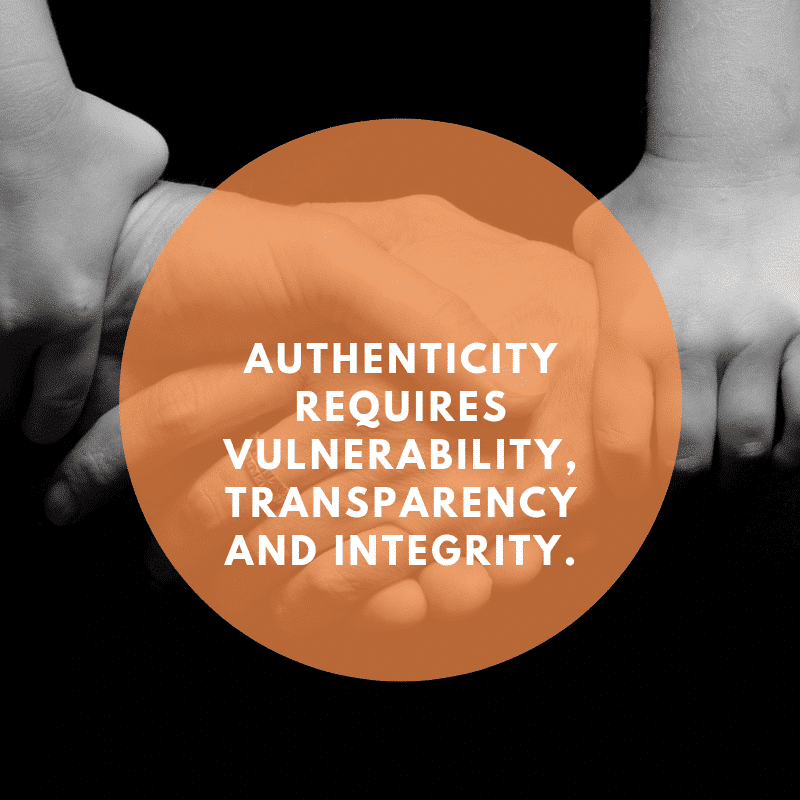Welcome to the world of the new influencers. The reason the social web is sometimes called the “wild west” is because were still working out the kinks of how best to communicate with one another online. The rules of conduct may not be set in stone, but the social web isn’t a total free for all either. You should be aware of some key, often mystifying, communication protocols before striking up conversations with the locals.
#1: Listen First
The golden rule is “listen first.” Start by finding some blogs and online communities that are discussing your product or organization. Let’s take a few shortcuts so you can reconnoiter a few corners of the Web right away:

a. Start with Google, of course. Unless you’re IKEA or General Motors or in the entertainment industry, you probably won’t find blogs dedicated specifically to your company or brand. Still, doing a complete search for <your company> blog can’t hurt. You’ll probably discover some blog posts that reference your company. Poke around the associated blogs, and see if they mention your organization on a regular basis. If they do, start reading them.
b. Can’t find any blogs exclusively dedicated to your company? No problem. Do you have larger competitors in your industry? Try searching for <your competitor blog. Start reading the corporate blogs written by your competitors, as well as the third-party blogs that cover them.
c. You can almost certainly find blogs covering your industry. Tough to believe? Pick the most unlikely industry and do a search for <industry> blog. Do a quick search for funeral blog. Try it — you’ll find dozens. If your industry has newsletters, magazines, and conferences, at least a handful of bloggers are writing about it, too. Find a few, and start reading them today.
With just a few clicks, you’ve got a virtual stack of reading material that will help you get to know the new influences in your industry, what they’re talking about, which companies they’re watching, and perhaps most importantly, what they’re not writing about. If you do your homework and read these blogs weekly, you’re laying the groundwork for good future encounters with these folks.
#2: Take Baby Steps
Rules exist for communicating within the different channels. Let’s look at Digg. Digg is the most popular social news site on the Web. Users submit their own news stories to the website, and others vote for or against the news stories . The best way to understand how folks communicate within Digg is to set up a user account. To begin, visit http://www.digg.com and click the Join Digg link in the top navigation bar. Complete the registration process, and upload a photo to make your profile a little more personal.
Next, browse the site using the topics listed in the navigation bar. Digg uses somewhat peculiar categories for organizing its stories (for instance, Technology has Apple and Microsoft categories, but no Google). Each section displays items including news stories, videos, and images that have recently been “voted up” or dugg within that section. Likewise, the front page displays popular stories that have been dugg for the whole site. The stories that appear on Digg’s home page can send hundreds of thousands of visitors to a website. On Digg, the community chooses which stories become popular and which stories get voted down, or buried.
Now’s your chance to get your hands dirty. Drill down into a section that interests you, or use the Search Digg text box to locate stories. Given the demographics of the Digg community, you’re going to find more stories about astronomy than ballet. Once you find appealing stories, click the link associated with each story summary to visit the story’s originating website. If you like the story, return to Digg and click the Digg It button associated with the story. The number of diggs will increase by one (or more, if the story is rapidly receiving many votes from other users).
Congratulations! You’ve just participated in your first, careful, and discreet social media discourse. By voting up a story on Digg, you’ve become part of the community by saying which stories deserve to be promoted. The lesson here is to start small.
Alternately, building your personal brand online can be a powerful tool for making inroads with new influences. If you’re working hard to make valuable contributions on social networks, blogs, and Twitter, then don’t hide behind a screen name. People like to know who’s behind a profile and often engage more readily with “real” people than with handles. If you use your real name, you’ll begin to enjoy the professional benefits of online exposure, including building stronger online relationships.
# 3 : Make Friends
Making friends online can be a lot easier than making friends in the real world. That’s one of the reasons social networking and online dating is so successful. Thankfully, online small talk is considerably less awkward than real-world cocktail chatter. You can extend your hand to online influencers by linking to their websites, subscribing to their blogs, adding them to your blog roll, following them on Twitter, or joining their Facebook groups. Before you start forging online relationships, you should familiarize yourself with these tools. Now is as good a time as any to sign up for Twitter and Facebook accounts if you haven’t already.

Bloggers, podcasters, and video creators notice these connections because they are constantly monitoring their growing audience. Think of these low-key, first moves as your calling card; they break the ice when contacting new influencers with your story. We’ve discovered that if the new influencers recognize you as a regular reader, a Facebook group member, an RSS subscriber, or a Twitter follower, they’re more likely to give you the benefit of the doubt and hear you what you have to say. Word of warning: Unless the person you’re trying to befriend has hundreds of Facebook friends — and is obviously not very discerning about who they “friend” — we suggest holding off on sending them a Facebook invitation. For most, a Facebook invitation is one step too far into the inner circle. Wait until you’ve had one or two email conversations before getting too friendly.
#4: Lay Your Cards on the Table
What are the two critical tenets of “new PR”? Authenticity and transparency apply to all your interactions with social media creators. You’ve got to be completely up front about who you are, what company you’re working for, and what your motivations and goals are.
For starters, the message needs to come from you, not info@yourcompany.com or news @your company .net. You’re trying to forge a personal, lasting relationship with the person at the other end of your outbox. If you appear to be hiding anything (and that includes hiding behind a generic email address), they’ll notice and hie your email among the Viagra and Rolex ads.

Clarity is key.If your goal is to get a blogger to review your product, simply ask him. Don’t send him tickets to the opening night of your play as a gift. Explain that free tickets are available for reviewers. If he wants free tickets, his intention should be to review your play. Whether you send a blogger a laptop or a new brand of dish washing detergent, be sure to request a review or he might misconstrue the gift as a bribe.
Take your lead from Andrew Milligan of Sumo Lounge International. Milligan wasn’t selling enough bean bag chairs to make a go of it. But when he began approaching bloggers offering to send them bean bag chairs to review, his luck changed. Two years later, after more than 250 blogger reviews or web posts about his bean bag chairs, the company’s annual profits have tripled.
#5: Bloggers Aren’t Journalists
Traditional journalists and bloggers have some obvious similarities, but recognizing that they’re not one in the same is important. Here are some key differences:
Bloggers’ requirements for content are less rigid.
A reporter on the entertainment beat has specific weekly requirements for articles. In an average week, he or she might write one celebrity profile, two movie previews, and two movie reviews. Bloggers are free from such stringent requirements. A movie blogger might preview six movies one week and none the next. That said, almost all of the top-tier bloggers publish lots of new content all the time. Conveniently, this means they’re constantly on the lookout for new material and aren’t tied to the same lead times and deadlines as print journalists.
Bloggers’ writing is usually informed by their opinion.
Bloggers don’t have to write about anything they don’t want to. Instead, they tend to write about things they respond to emotionally (whether with outrage or adoration). So bloggers will not want to transcribe your media release announcing a new corporate partnership — press releases are utterly devoid of feeling (and, of course, are boring, manufactured news).
Bloggers make connections.
If you can’t include a hyperlink in your pitch, don’t target bloggers. They’ll look for something to link to, and if you don’t provide a link, they might link to your competition — or an unflattering article about your organization.
Bloggers reject marketing language.
Journalists are accustomed to the corporate hackery of the modern media release with its superlatives and glowing prose. Journalists typically receive dozens of corporate entreaties a day and are proficient at cutting through the noise and PR flacks to get to a story’s source. They recognize biased marketing messages as a necessary evil. Bloggers aren’t as hardened to spin, but they aren’t fooled either. In fact, bloggers can be publicly critical of your marketing process. We sometimes see naive marketers mercilessly mocked by bloggers because they’ve made unfounded or exaggerated claims in a press release. Journalists often have the good taste not to ridicule you; bloggers aren’t always as kind.
Will bloggers respect embargoes?
That is, if you ask them not to publish your news before a certain day and time, will they hold off? Probably, but aside from a few probloggers (those who blog for their day job), they won’t know what an embargo is. Still, if your entire marketing campaign revolves around radio silence until a particular time on a particular day, select the influences you pitch with extra care.
In practice, this rule is slightly tricky because sometimes you’ll benefit from treating bloggers exactly like the main- stream media. For instance, you wouldn’t pay a journalist to review your product, so you shouldn’t pay a blogger either. Similarly, you wouldn’t tell a journalist how to write his or her story, nor should you draft a post for a blogger and suggest he or she post it. As a general rule, approach bloggers with the same professionalism as you would a journalist, but with added caution.
# 6 : Your Reputation Precedes You
A marketer’s pro hie is a lot more public and personal than it used to be. Although some influencer communication happens via email, online communication tends to spill over into public spaces — like blog comments, Facebook profiles, and YouTube video responses. Your name is associated with every message and comment. The sun has set on the age of the ‘an unnamed company representative.’ If you’re just getting started in social media marketing, this lesson is important to learn immediately — before your online reputation gets sullied by impetuous blog comments, indignant posts, or simply offering too much information about your personal life.
Google can store old copies of websites for months or years. As the Web ages, definitively removing con- tent — whether a social networking profile, a blog comment, or a video — is only going to get harder.

Additionally, the Internet doesn’t discern between personal and professional content, so your public persona online is your professional persona. They are inseparable. Of course, not all is doom and gloom, drunken spring break photos on MySpace, and unearthed sex videos; all the good works you do online show up too. If you’re a member of your local town council, teach community salsa dancing lessons, comment astutely in forums and on blog posts, join affinity groups for good causes, or blog on a topic you’re passionate about, that all bolsters your online reputation. When you work on the Web, remember that taking care of your digital reputation is good for your business and for your career.
# 7 : Don’t Be a Social Media Spammer
I don’t know the first thing about [this company \ . But then this morning they spammed me. Any email that lands in my inbox that’s written in marketing-ese and I don’t know who sent it, that’s spam.
— Tim Bray, software developer, entrepreneur, and blogger
Spammer is pretty much the worst aspersion you can cast on a web denizen. In the online world, being called a spammer is like being called creepy , desperate, and corrupt all at once. Marketers rightfully worry about demonstrating “spammy” behavior and often ask us how to avoid looking like a shady online citizen. If you practice what we preach elsewhere in this book, you should be okay.

For the sake of completeness, however, this behavior is the kind that will brand your forehead with a big red S:
• You send generic emails to bloggers and podcasters with salutations like “Dear Webmaster.”
• You contact bloggers with grand promises of “link exchanges.” Bloggers value links but offers of link exchanges have all the appeal and personality of pyramid schemes.
• You post promotions for your own Facebook group (or worse, your product) on the “walls” of other Facebook profiles, pages, and groups.
• You haphazardly respond to blog posts, podcasts, and videos that discuss your competitors and leave promotional messages about your services.
• You don’t consider the topics a social media creator covers, and as a result, you pitch a chick lit novel to the guy with a hockey blog.
• You send press releases out to large lists you bought or culled from the Web without obtaining the recipients’ permission.
• You sneakily insert links to your products and services into Wikipedia.
• You offer to buy editorial coverage on a blog. On that note, you should be skeptical of anyone who accepts payment to promote your organization without publicly disclosing that payment.
• You forget to listen first.
Lesson #8: Don’t Fib
With all our talk of honesty, authenticity, and trust, this point should be obvious. But surprisingly, companies still try to deceive, misdirect, and spin conversations on the Web. Don’t lie, because you’ll get caught. And when you get caught, your online reputation will take a beating.
In addition to all the ways marketers usually lie, two related, insidious strategies seem increasingly prevalent in the social media sphere: AstroTurfing and sockpuppeting. The former refers to a PR strategy where a campaign tries to appear spontaneous and grassroots but is actually orchestrated by an organization. Astroturf is a metaphor for fake grassroots support. Sockpuppeting is the creation of fake web profiles for the express purpose of promoting or advocating for a particular company or organization.
Examples of astroturfing exposed are legion. In 2006, science journalist Antonio Ragalado exposed a YouTube video critical of Al Gore as being produced by DCI Group, a public relations firm with ExxonMobil and General Motors on their client list. DCI Group claimed the video had been spontaneously created by an amateur filmmaker in California. What made Ragalado suspicious? DCI Group was running advertisements on Google results pages shown to web users searching for “A1 Gore.” Do a search for DCI Group in Google or Yahoo!. Consider how many of the top 30 results are unflattering accounts of this incident or otherwise critical of the company. That’s the cost of astroturfing.
The simplest form of sockpuppeting in the blogosphere is also the most common. Company representatives leave fake comments using dummy user profiles in response to blog posts that are critical of their organization. Some pretend to be customers who are over the moon about the company’s fantastic product; others ruthlessly bash their competitors. Many marketers aren’t savvy enough to know that when bloggers look up their IP addresses, the sockpuppets’ identi- ties can become very clear. The IP in IP address stands for Internet protocol. They’re numerical addresses that identify computers that are connected to the Internet. IP addresses can sometimes be used to determine, in general terms, the geographical location or Internet service provider associated with web activity such as posting a com- ment to a blog. In 2007, the CEO of Whole Foods, John Mackey, wrote anonymous online attacks of a smaller competitor, Wild Oats, in Yahoo financial forums. He seemed to be trying to devalue Wild Oats’ stock before Whole Foods offered to buy the company. In the end, Mackey was outed by the Federal Trade Commission when it investigated the acquisition. The sockpuppet debacle publicly embarassed Whole Foods and Mackey and must have cost the company a fortune in legal fees.
There you go. Now that you know the do,s and don,ts on social web, take a ride and stay safe!
















